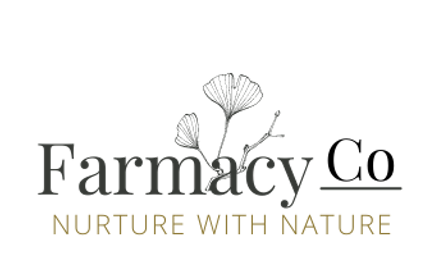Magnolia Flower
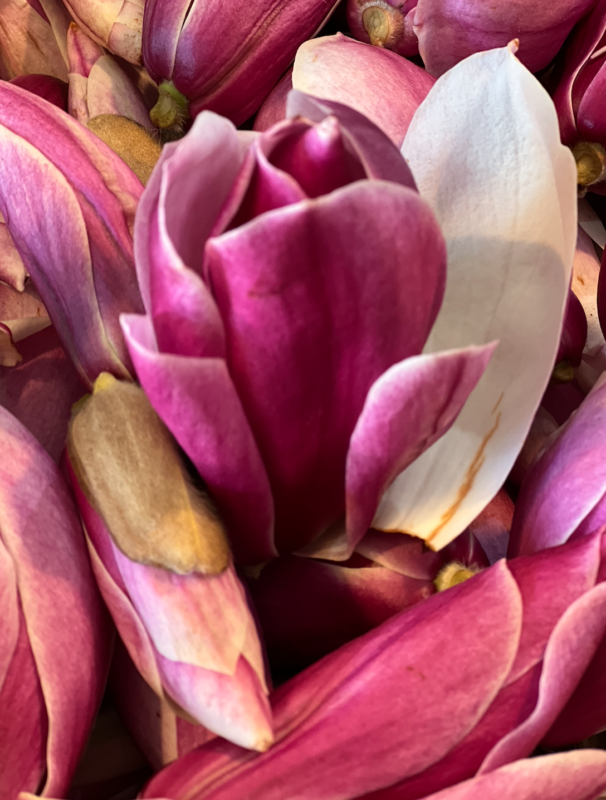
I love the start of spring here in Victoria, the blossom on the trees and the awakening of plant life. One flower to mark the start of Spring in the magnificent Magnolia. Did you know you can eat them? People use the bark and flower buds to make medicine as well.
Magnolia is used for weight loss, problems with digestion, constipation, inflammation, anxiety, stress, depression, fever, headache, stroke, and asthma.
Magnolia flower bud is used for stuffy nose, runny nose, common cold, sinus pain, hay fever, headache, and facial dark spots.
Some people apply magnolia flower bud directly to the gums for toothaches.
In rub-on skin care products, magnolia flower bud extract is used as a skin whitener and to minimize or counteract skin irritation caused by the other ingredients.
In traditional Chinese and Japanese (Kampo) medicine, magnolia bark is an ingredient in Hange-koboku-to, which is composed of 5 plant extracts, and in Saiboku-to, which is composed of 10 plant extracts. These extracts are used to decrease anxiety and nervous tension and to improve sleep. Some researchers believe honokiol, a chemical in magnolia bark, is what makes these medicines work.
Here are all of the things I made with Magnolia flowers –
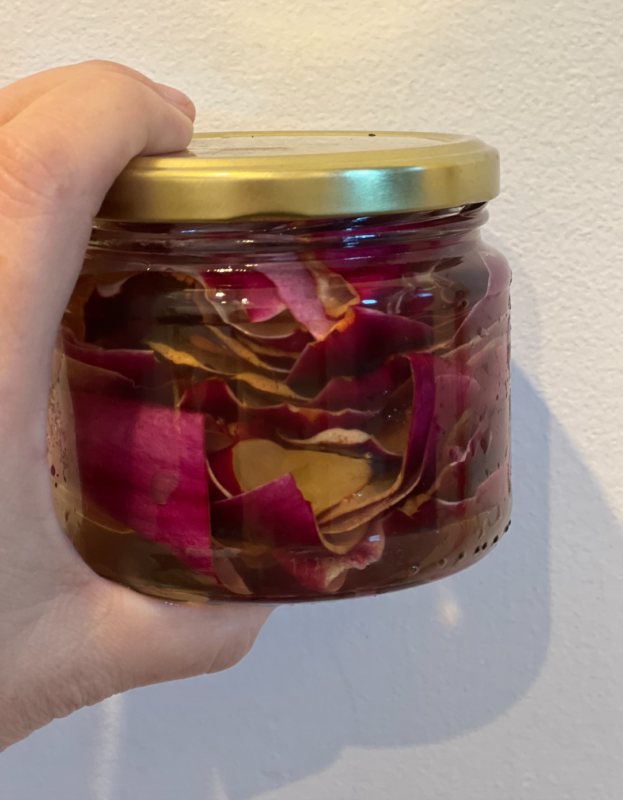
Pickled Magnolia Flowers
Ingredients
-
80-100 grams magnolia petals, freshly picked
-
150 ml Apple cider vinegar
-
50 grams sugar
-
0.5 tsp salt
Instructions
-
Measure the vinegar by volume and add the weighed sugar and the salt to it.
-
Heat the pickling liquid gently and stir until the sugar has melted in. You can do this on the stove top or in a microwave – I heated mine for 30 seconds, stirred, and heated again for another 30 seconds.
-
Taste the pickling liquid to check if the balance between sweet and sharp is to your tastes. If not, add a little more vinegar or sugar, as needed.
-
Carefully break the petals off the flower at their base. Discard everything but the petals and place in sterilised jar
Pour the pickle brine over the petals and in 3 days your pickles are ready.
-
Magnolia Bud Honey
Place the magnolia buds in a jar and pour over a raw honey, store in a cool dark place for at least 6 weeks to infuse.


Dried Magnolia buds
Dry the magnolia buds and store in a air tight container to use as a delicious fragrant herbal tea
Magnolia Petal Jam
Ingredients
- 2 cups lightly packed, sliced magnolia petals
- 1 1/2 cups of filtered water
- 2 cups organic cane sugar or jaggery (unrefined cane sugar)
- 3 tablespoons fresh lemon juice
- 1 teaspoon fruit pectin or jam setter
Instructions
- Place water and petals in a saucepan. Bring to a gentle simmer for 10 minutes, uncovered.
- Add 1 ¾ c of sugar into the simmering petals. Stir to dissolve the sugar crystals.
- Add freshly squeezed lemon juice. Pay attention to the gorgeous vibrant colour that emerges.
- Simmer 10 minutes over low heat.
- In a small bowl, combine the remaining ¼ cup sugar and pectin.
- While stirring the jam add the pectin/sugar mixture, sprinkle by sprinkle to ensure pectin incorporates without clumping.
- Simmer gently for 20 more minutes. It may seem quite loose for jam, but it will firm up as it sets but does remain more of a silky syrup with luscious bits of petals.
- This keeps for 2 months in the fridge, also freezes beautifully and canning is always a brilliant option.
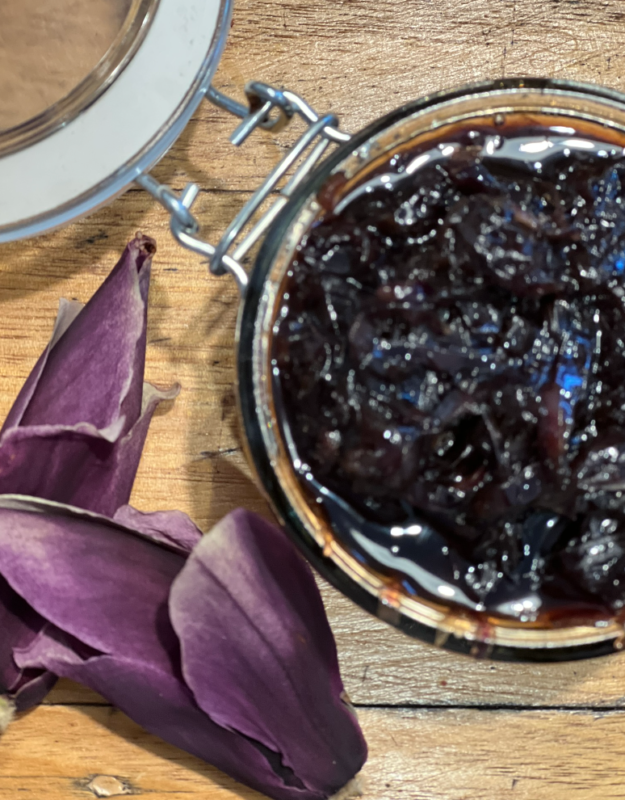
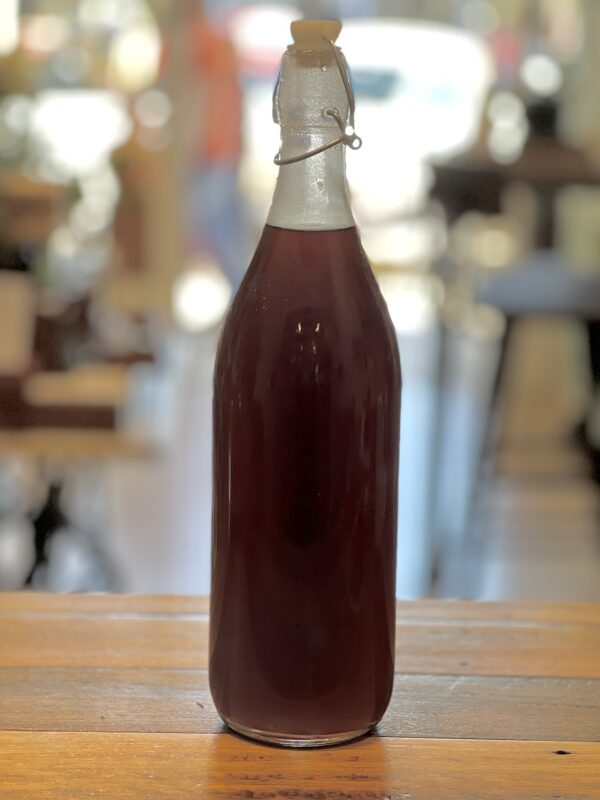
Magnolia Syrup
Ingredients
- 25 g magnolia flowers – unsprayed petals alone weigh 20g
- 150 g golden granulated or golden caster sugar
- 150 ml water
Instructions
-
Strip the petals from the ovaries at the base.
-
Place sugar and water in a pan and place over a low heat until the sugar is fully dissolved.
-
Add the magnolia petals and leave uncovered to barely simmer for twenty minutes.
-
Strain the syrup through a sieve into a sterilised bottle. Seal and leave to cool.
-
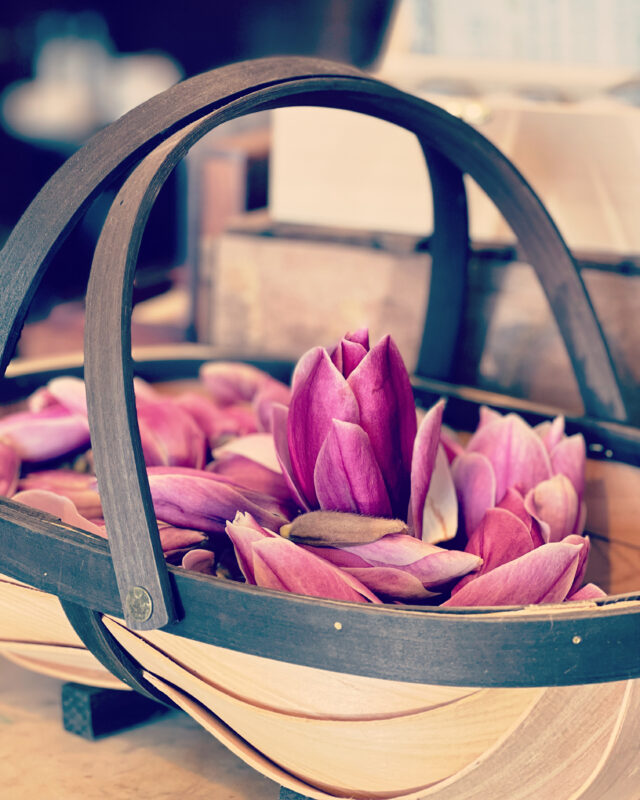
How do they Taste?
Magnolia flowers have a gingery, buttery taste and texture. They also have a gentle perfume that is subtle but calming.
They are abundant at the end of Winter start of Spring so bookmark this page for next season. You’ll also notice that there is different varieties so try them all and find your favourite. If you are picking from a strangers tree, make sure you ask for permission first.
I’ll also be making a tincture with the flowers and distilling the flowers for hydrosol to use in skin care.
